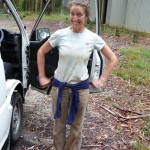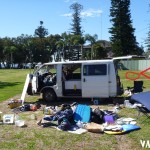Making Lists
One thing I love and excel at is making lists. I am equally good at losing, accidentally recycling or forgetting my precious list. This week as I was contemplating what to write I found one of many list I started secured in my journal: My Favorite Animals from Australia. I had about fifteen or so animals on there and I thought, “Great. This will be a fun post and a walk down memory lane for me. Perfect.”
It was great, except as I started going through photos I realized I have more than fifty plus favorite animals from Australia – not to mention special category lists such as endangered animals seen or animals endemic (native to a particular area). I still had a list I made from the USA stating the top ten animals I hoped to see in the wild before even moving to Australia.
It was great, except as I started going through photos I realized I have more than fifty plus favorite animals from Australia – not to mention special category lists such as endangered animals seen or animals endemic (native to a particular area). I still had a list I made from the USA stating the top ten animals I hoped to see in the wild before even moving to Australia.
So what I thought would be a fun little post, turned into hours of torture for me as I had to pick and choose a reasonable thirty animals to show – only to then tell myself that was too much and chisel it down further – at least for now. So without any more unnecessary torture on my part, here is some pictures of animals on my new list entitled:
A List of Just Some of My Favorite Animals from Australia, But there are Still A Lot More

This is a wombat. Oh my gosh – I love these guys. I wrote a song all about the wombats. They are like a small bear and solid like a rock. They are very shy creatures that dig tunnels for their home and as such they like to itch to get all the dirt off. We were woken up in the middle of the night to a rocking van as a wombat was going to town having a good scratch on the van.

These are two younger Eastern Grey Kangaroos having a practice fight. From the roo on the right, you can see how much they use their tails for balance. These two would fight like crazy simultaneously pausing to scratch themselves then resume fighting.

This is a female Eastern Grey Kangaroo with her joey, or her baby. Female roo reproduction is absolutely fascinating. Once a female starts having babies she is almost always pregnant – but if for example a bad drought happens and food sources are low, she can pause the development of her joey thus reserving her resources. Once food sources are available again, the baby will resume growth.

This is the kings parrot, a striking red and green bird found on the Eastern side of Australia.

Of course a koala. Koala’s are marsupials and eat a very niche diet of eucalyptus trees. The conservation of healthy eucalyptus forest is a critical aspect for the long term survival of koalas in the wild. You can check out the Koala Hospital which is a pretty unique facility and on the forefront of conservation and research for these threatened animals.

This little guy in an echidna. These fellas are special because they are one of only two types of living monotremes in the world, meaning a mammal that lays eggs as opposed to giving live birth. Surviving on a diet of ants and termites, they are one of the few animals that can be found in almost all of Australia’s diverse habitats. When they get scared, which happens easily, they will curl up into a tight ball.

This is an Indo-Pacific Dolphin. We got to have amazing dolphin sightings at Shark Bay on the Western side of Australia. There is a resident pod that has lived around Shark Bay for years.

Platypus! Surprisingly small, the platypus is a unique creature in its own family. A good way to know where to look for them in the water is by the distinctive ripples they leave in the water, as you can see in the photo here.

We were so excited to see this lizard in the wild. This is the perentie, Australia’s largest lizard.

Ah…the whale shark. Swimming with these giants was one of our primary goals in Australia. So many decisions, such as when to stop working on the potato farm and continue driving west, coincided with ensuring we caught the migration pattern of the whale sharks as they passed along the Ningaloo Reef from May-July. Experiencing the sensation of swimming next to these graceful animals is a must do.

Saltie, or estuarine crocodile. One of the few animals to never be face to face with in a survival situation. These guys are ruthless and efficient predators. Australia has a huge campaign to educate about croc safety – which ultimately boils down to: don’t swim or stand close to the water if it it known to have salties, and if you are unsure, follow the aforementioned advise.

Spinifex Pigeons are ground forages that usually run around in small flocks. They are quite shy, yet amusing as their heads bobble back and forth as they run across the ground.

And for now we’ll end with the manta ray. All the fuzzy looking stuff in the photo is plankton that this manta is feeding on. Harmless to humans, the mantas have no barb on the end of their tail. They are another gentle giant of the sea currently under threat. You can sign a petition at Project Manta to help further support for their conservation.
Advertisements
 Previous Post
Previous Post Next Post
Next Post
Isn’t it interesting that in one single post you managed to post pictures of the only two types of monotremes in the world!?!? How crazy is that? Two kinds of monotremes and both are in your blog! =)
Australia had some pretty spectacular animals.
…can’t be easy finding all these unusual critters in the wild…
Oh we went far and wide to areas we hoped to see wildlife–still heaps we never got to see in the wild. Just another reason to go back. We’ll find you yet numbat!
I didn’t realize manta ray’s had a big tunnel mouth. Holy smokes!
Oh they do. They are just so graceful and inquisitive animals. I just love them and we got to swim with the manta in this picture several times. I called her Alice.